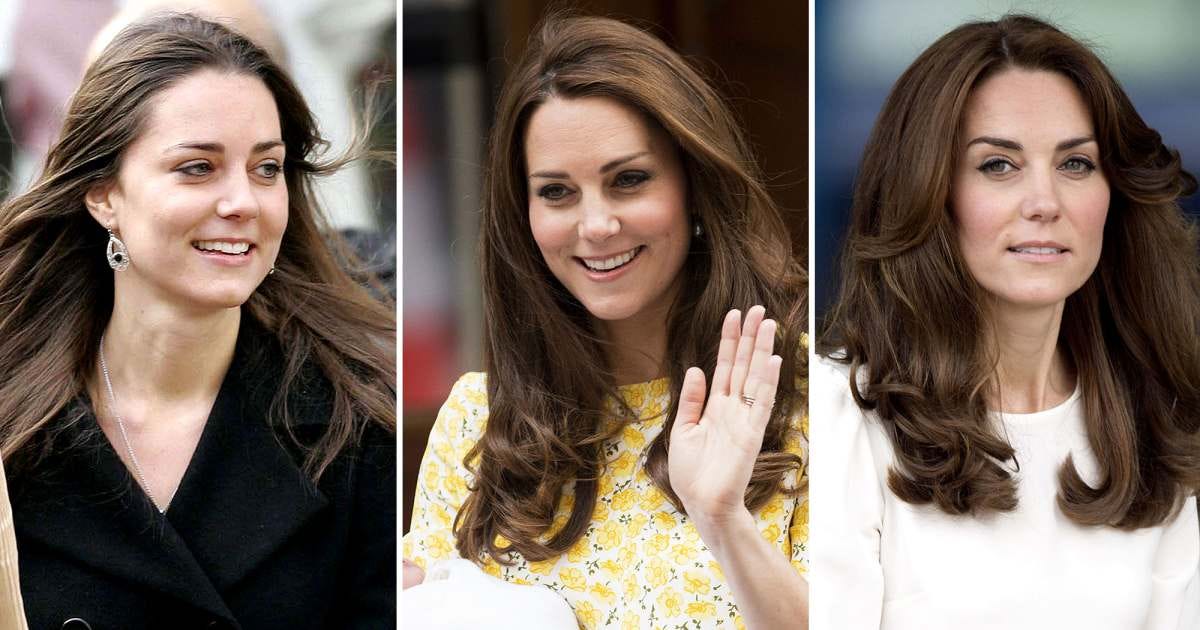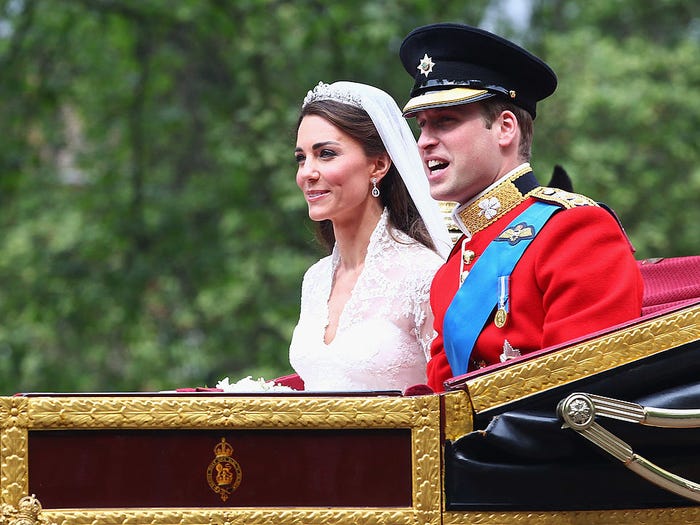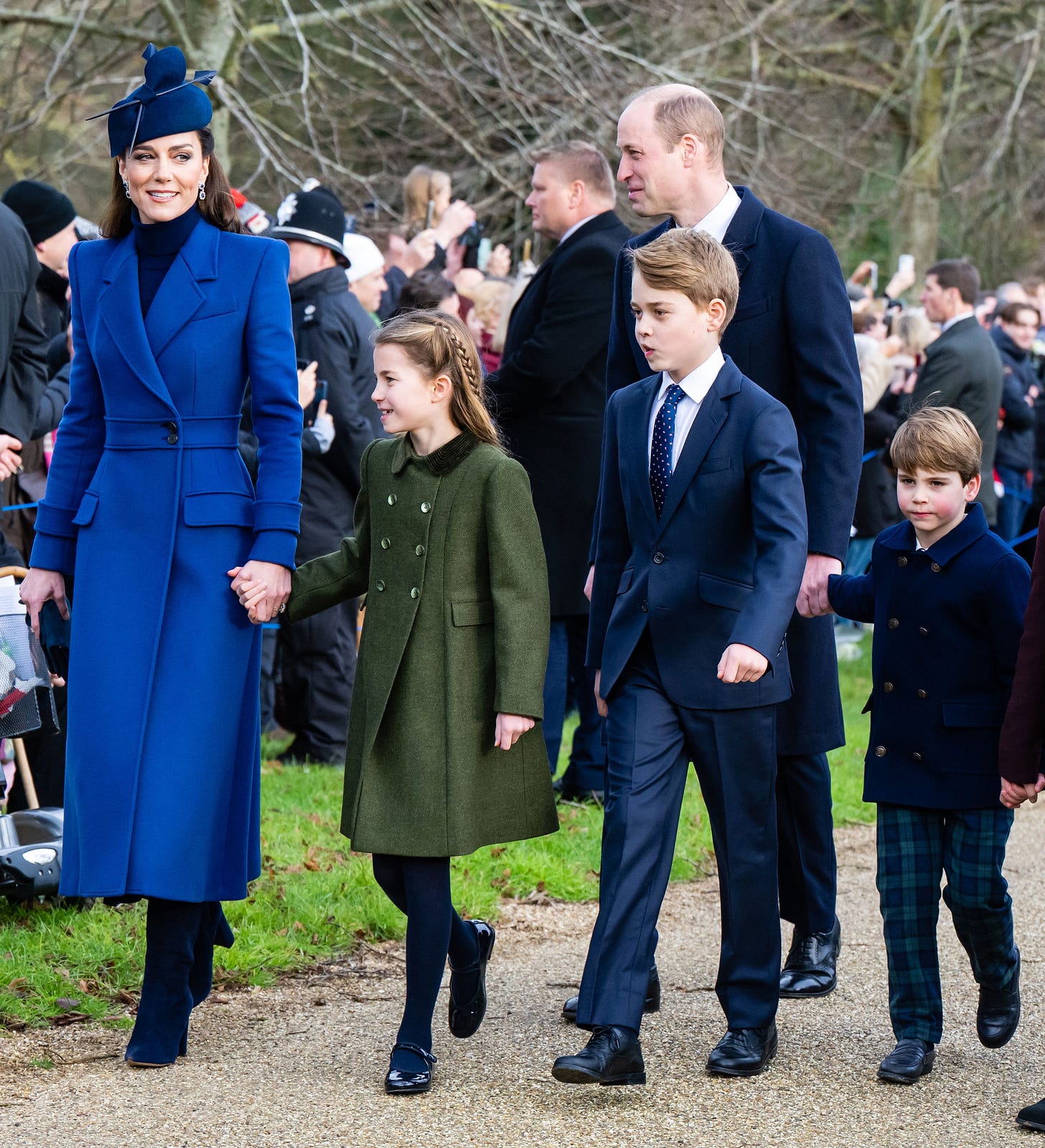“Kate Middleton has made her first appearance in six months,” I might say to start a TikTok video. A sentence that has the potential to take the ensuing conversation in a myriad of directions — but also one that brings up the most vexing question I’ve yet to encounter as a royal commentator: “Why do you still call her Kate Middleton?”
The answer is not “Because I want to.” Because it’s not just me, or even other content creators! You’ll also find media outlets relying on the “Kate Middleton” moniker. The reason behind this rather informal means of addressing the Queen-in-waiting is rooted in a blend of tradition, familiarity, and the quirks of royal titles.
The Power of Branding
Let’s start with branding. The name "Kate Middleton" became ingrained in the public’s consciousness long before Catherine walked down the aisle at Westminster Abbey. As Prince William’s longtime girlfriend, Kate was the subject of intense media scrutiny, with every aspect of her life being dissected and discussed in the papers. By the time she was officially a royal, "Kate Middleton" was a household name.
In the world of media, names carry significant weight. They’re not just identifiers, but powerful brands. Changing a name that the public already knows, recognizes, and types into Google can be a risky move for media outlets, potentially leading to confusion or loss of engagement. By continuing to use "Kate Middleton," media outlets ensure that readers immediately know to whom they’re referring.
There’s also a practical side to consider. Unlike celebrities, who often have a single name or easily recognizable surname, royal titles can be a mouthful. (Not to mention, they seem cold and impersonal—but more on that below.)
"Kate Middleton" is concise and easily searchable—a boon for journalists and editors looking to write catchy headlines or for readers skimming through news apps. And if Kate herself has branding on the brain (which she very well might; the currency of the monarchy is their relevance), keeping the link to her maiden name would ensure seamless press coverage of her appearances, causes, and, well, personal brand. The Palace could issue a memorandum demanding that media outlets use Catherine’s proper title whenever they refer to her—but no such move has yet been made. Doing so would undercut all efforts to keep Kate—and her positive approval rating—on the public’s mind.
A Nod to the Commoner
Speaking of approval ratings, relatability is one of the Wales family’s top advantages in the endless tug-of-war of public acceptance. That’s why there’s also a subtle psychological aspect at play even with something as unassuming as the name "Kate Middleton." This (decidedly middle-class) name evokes the image of an approachable, down-to-earth individual. “Kate Middleton” is a young woman from a commoner family who captured the heart of a future king with her wit and charm. “Catherine, Princess of Wales” is a towering, untouchable character. There’s a degree of separation there.
This narrative of a “commoner” joining the royal family resonated with so many onlookers (yours truly included) back in the early 2000s, incorporating the age-old fairy tale aspect to Kate’s story. The continued use of her maiden name reinforces this connection, reminding us that Kate is still “one of us.” “Kate Middleton” sounds like the girl next door—someone people feel they’ve known for years. For many, there’s something undeniably charming about still being able to call the next Queen of Britain “Kate.”
What better way to combat royal titles, by their very nature, feeling distant and formal to the public? The royals currently exist in a unique space where tradition meets 21st-century expectations. Formal titles is just one area where these worlds collide, but it’s a very conspicuous one. In that way, the persistence of "Kate Middleton" in popular conversation is a testament to her unique role in bridging these two worlds. She’s a royal with a down-to-earth background, navigating the expectations of an ancient institution while keeping her image in touch with the public’s expectations.
Counterpoint: “She hasn’t been Kate Middleton for 13 years.”
You know who else hasn’t been called by their maiden name for over a decade? Mary of Teck. (Well, in that Queen’s case, it’s more like 13 decades, seeing as she married the future King George V in 1893.) But historians—and perhaps more importantly, Google—still refer to her using her place of birth.
Royals from across time have a long legacy of colloquial names sticking in public memory, even if official titles change. For example, many refer to "Princess Diana," even though her correct title after marriage was "Diana, Princess of Wales." Just as Diana was forever linked with her pre-divorce title, “Kate Middleton” has been likewise cemented in the public's mind.
“Call her Catherine Windsor if you must.”
Umm…no. I will not do that, because it would be laughably incorrect of me—more so than the name I called her by in the first place!
“Windsor” is a made-up surname of the British royal family, stemming from the House of Windsor, which was established in 1917. The name replaced the family’s more German-sounding dynastic of Saxe-Coburg-Gotha at a time when Britain and Germany were enemies (thank you, World War I).
That being said, royals often don't use surnames like you or I do. When they do use a surname, it can be “Windsor,” “Mountbatten-Windsor,” (a combination of the late Queen and Prince Philip’s surnames), or even a name derived from lesser titles, like “Wales,” “Sussex,” or “Cambridge. Catherine is almost never referred to as "Catherine Windsor" because she and Prince William use “Wales” when a surname is required—such as for the children’s school registration.
But if we do want to be pedantic about referring to Kate “correctly,” her official royal titles always take precedence. In fact, as a senior member of the royal family, she is almost always identified by her title rather than a surname—or even a first name. For instance, her formal title after marriage was "Her Royal Highness The Duchess of Cambridge," and now it’s "Her Royal Highness The Princess of Wales." Calling her “Princess Kate” would never be the correct way to address her, due to a patriarchal quirk in the British royal family’s naming system.
Only blood princesses (that is, women who were born into the royal family, rather than marrying in) may use their title before their first name. Royal wives use the feminized versions of their husbands’ titles and, therefore, would also use his first name if (for whatever reason) they wanted to have “Princess” be used when addressing them directly. Kate, then, could correctly be called “Princess William of Wales.” And yet, for some reason, folks aren’t clamoring for her to be addressed this way. Wonder why?









Makes me think of when Tom Cruise tried to rebrand Katie Holmes as Kate. Once a celebrity is known in one way it’s impossible to get all of society to pivot.
It’s the same for Sarah Ferguson or ‘Fergie’. Never really called her by her official title.